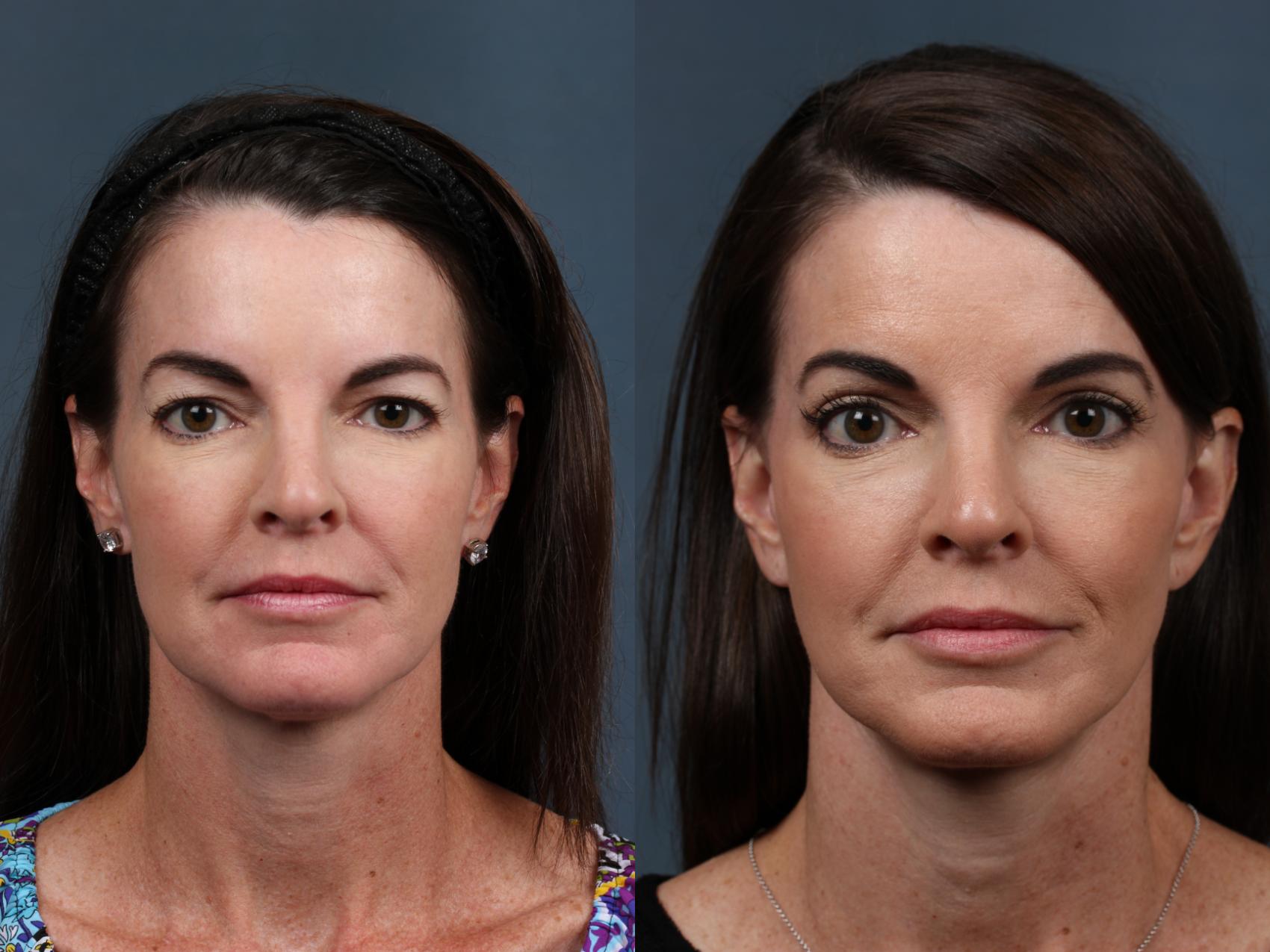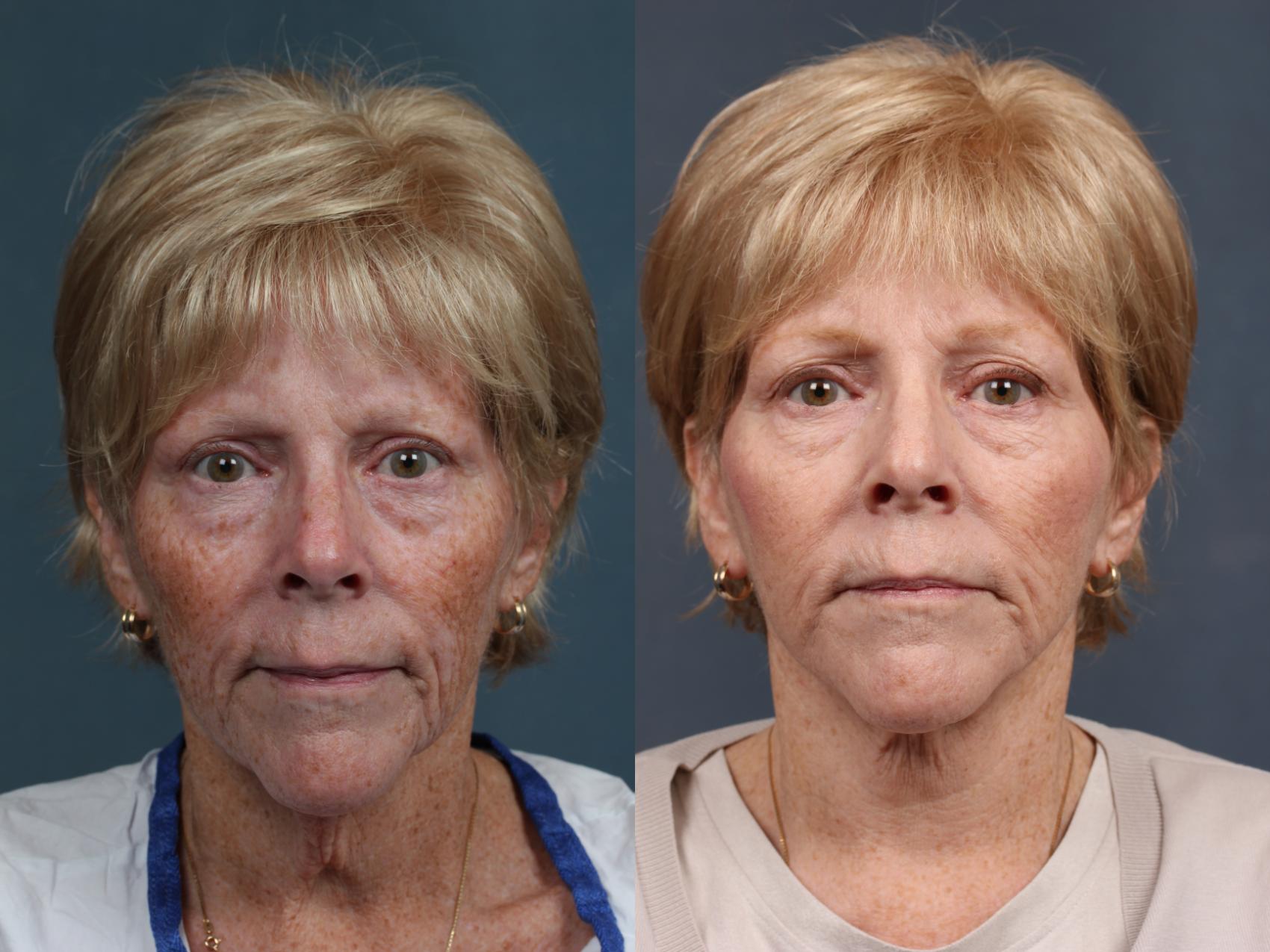
If you’re like many of our Louisville patients, you might be worried that you are too old or too young for a facelift. You can stop worrying! There is no ‘best’ age to have a facelift, and depending on where you are in life, a facelift can improve many of your facial concerns.
This transformative procedure lifts and tightens sagging skin and lax muscles in the face and neck, smooths the skin in the lower face, contours and defines the jawline, and improves a double chin. So, what is the best age to have a facelift? Keep reading to learn about facial aging at each stage of life and discover some rejuvenation options that suit those concerns.
In Your 20s
You may be enjoying the best skin of your life but starting to notice the beginnings of fine lines and wrinkles. A facelift at this point is often not necessary. Most men and women in their 20s will have better results with nonsurgical procedures such as radiofrequency microneedling, BOTOX® Cosmetic, or dermal fillers.
There are several reasons you should be cautious about getting a facelift in your 20s. First, your skin laxity is probably not yet extensive enough to warrant surgical intervention, which always carries some risk. Also, your fine lines and wrinkles will progressively become more prominent in your 30s and 40s, and you may need a repeat facelift down the line.
In Your 30s
For some people, this might be a good age to consider a mini facelift, but nonsurgical options may still be a better alternative. Only about 1% of all facelifts in 2020 were performed on people in their 30s, according to the American Society of Plastic Surgeons.
Fine lines around the mouth, nose, and forehead begin to etch into the skin at this age, and the decline in skin elasticity may become noticeable. You may not have jowling or extensive facial creases yet, but this is a good time for preventative measures such as Sofwave™ or laser skin tightening to keep your face looking youthful.

In Your 40s
You will likely start to see significant changes to your face and body in your 40s, making it a good time for a facelift. While you can still consider nonsurgical cosmetic options, they may not give you the impactful results you are looking for.
Make sure to choose a board-certified plastic surgeon who can give you natural-looking results and understands your rejuvenation goals. Your plastic surgeon should have years of training as well as extensive experience performing facelifts.

In Your 50s
Your 50s may bring more age-related concerns, especially in the neck area. You may also notice a shift in fat deposits in both your face and neck, resulting in a tired, sunken appearance in the midface and jowling along the jawline and upper neck. A facelift can improve these concerns and help you look more rested and youthful. Your plastic surgeon will evaluate whether you are a good candidate for a facelift and advise you of your potential results.

In Your 60s
The vast majority of people who have facelift surgery are between the ages of 55 and 69. That’s partly because men and women in their 60s can achieve a facial reset with a facelift procedure.
If you’re in this age group, you may also be frustrated with upper eyelids that sag, cheeks that have become flat-looking, and lower eyelids that have bags or dark shadows. You can combine your facelift with eyelid surgery, a brow lift, or fat transfer to improve facial contours and definition. These combinations provide full face rejuvenation to set the clock back about 12 years.

You should disclose any medical issues and previous medical procedures to your plastic surgeon during your consultation, including high blood pressure, heart issues, and diabetes
Recovery Process After a Facelift
Regardless of your age, you should carefully follow your plastic surgeon’s instructions and recommendations after a facelift. Your plastic surgeon will advise keeping your head elevated after the procedure and using cold packs to reduce postoperative swelling.
It’s important to refrain from bending over or lifting heavy items for at least a week after surgery to prevent straining your incisions and elevating your blood pressure. Although your workouts should be postponed for about 1 month after your facelift, you can engage in low-intensity activities such as slow walking.
Get Started Today
A facelift can be beneficial at many stages in your life as long as you have realistic expectations. We have helped many men and women achieve excellent, natural-looking facelift results, as you can see in our before and after pictures. If you feel like a facelift is the right option for you, request a consultation online at our cosmetic surgery practice in Louisville, KY, or call us at (502)-586-3288 to schedule an appointment.

